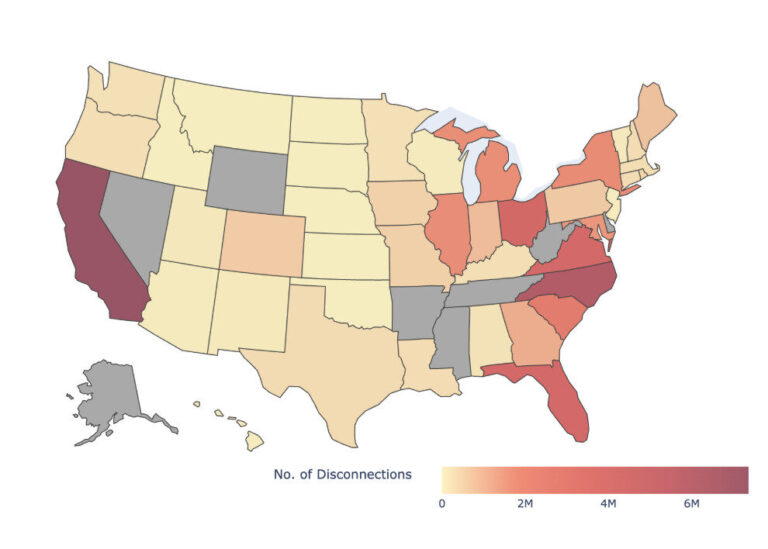Attacks on wind and solar power by the coal and gas industries

Wind and solar power projects are under attack by coal and gas companies that fear competition from the booming renewable energy industry.
Below are examples from the past year of the fossil fuel industry’s war on renewable energy projects.
Who killed the Wind Catcher project?
In July of 2018, AEP announced the cancellation of the Wind Catcher project, a multi-state effort to build what would have been the nation’s largest wind farm. The move came after the Public Utility Commission of Texas (PUCT) denied approval of the project, which had been previously approved by regulators in Arkansas and Louisiana, as well as by the Federal Energy Regulatory Commission.
The Texas Industrial Energy Consumers (TIEC) was among the intervenors who opposed the Wind Catcher project before the PUCT. In its motion to intervene, TIEC said that its members involved in the case “include United States Steel.”
A list of United States Steel subsidiaries and joint ventures found in the company’s most recent annual report includes Chisolm Coal LLC, Kanawha Coal LLC, Ontario Coal Company, and Stelco Coal Company.
TIEC was represented in the Wind Catcher case by the law firm Thompson & Knight.
“We are counselors to Texas Industrial Energy Consumers (TIEC), a trade association representing approximately 50 of the largest energy consumers in the state,” according to the firm’s website.
“Many TIEC companies are leaders in oil and gas production and refining, and in all forms of manufacturing, including high-tech, pulp and paper, and virtually every type of chemical manufacturing,” Thompson & Knight’s website also says.
Other TIEC members identified in a filing in a separate case last year included the Chevron Phillips Chemical Company, ExxonMobil Power & Gas Services, Kinder Morgan, Phillips 66, and Valero Energy.
The PUCT’s order in the Wind Catcher case noted that while AEP projected nearly $1.5 billion in net benefits for consumers over the life of the project, opponents found the project would result in net costs.
TIEC “argued the net cost could exceed $1 billion,” according to the PUCT order.
“The bulk of the evidence in this proceeding casts doubt on the assumptions SWEPCO [an AEP subsidiary], who bears the burden of proof, used to determine that benefits to consumers are probable,” the PUCT said, and much of that “evidence” came from TIEC.
The PUCT’s order cited the arguments of TIEC more than those of any other intervenor in the case. It was preceded by a “Proposal for Decision” by an administrative law judge that mentioned “TIEC” 135 times.
One of TIEC’s arguments was that AEP overestimated the value of Wind Catcher’s carbon emissions benefits by $550 million, and that those benefits should be negated due to President Trump’s efforts to roll back the Clean Power Plan and the unlikelihood of a carbon tax being imposed anytime soon. The PUC and administrative law judge both echoed TIEC’s arguments on this issue.
Ironically, AEP opposes a carbon tax and the utility has also backed special interest groups, such as the American Coalition for Clean Coal Electricity and Utility Air Regulatory Group, involved in fighting the Clean Power Plan, the Obama-era EPA rule that sought to set limits on carbon pollution from power plants.
The fossil fuel industry opposed Wind Catcher in other states too, including opposition in Oklahoma from the Windfall Coalition, backed by the gas producer Harold Hamm and other fossil fuel funded forces.
Americans for Prosperity (AFP) fought the project in in Arkansas, Louisiana and Oklahoma. The group is backed by the Koch brothers, and has also had financial ties to coal producers like Alpha Natural Resources and, in Oklahoma, Peabody Energy. AFP included the death of the Wind Catcher project on a list of its victories in 2018.
Anti-Wind Catcher campaigns were also run by dark money groups that used names like “Protect Our Pocketbooks,” “Renewable Arkansas” and “Renewable Louisiana.” Protect Our Pocketbooks employed lobbyists in Arkansas and Louisiana known for their work for the gas industry.
As previously reported by the Energy and Policy Institute, Americans for Affordable Energy, the group behind Renewable Arkansas and Renewable Louisiana, was incorporated in North Carolina by the fiancee of the director of research for the Hawthorn Group. The Hawthorn Group is known for its role in deceptive political campaigns backed by fossil fuel and utility interests.
The coal industry is fighting new renewable energy projects in Ohio and Indiana
Coal producer Murray Energy secretly paid for an attorney and consultant to represent two local residents in their fight against the Icebreaker pilot offshore wind power project on Lake Erie before the Ohio Power Siting Board (OPSB).
The same lawyer and consultant that Murray Energy paid to fight Icebreaker are now employed by the Ohio Coal Association in its battle against AEP’s plan to invest in 900 megawatts of new wind and solar power before the Public Utilities Commission of Ohio.
The attorney, John F. Stock of Benesch, Friedlander, Coplan, and Aronoff, previously represented a shadowy coal-backed group called the Campaign for American Affordable and Reliable Energy (CAARE) in a number of wind power cases before the OPSB. CAARE’s requests to formally intervene in several of those cases were denied, and since then Stock has been representing a growing number of anti-wind activists in Ohio and Michigan.
Stock is currently representing anti-wind activists in fights against the Seneca, Republic, Black Fork, and Buckeye/Champaign wind farms in Ohio. He’s also popped up in the docket for the Firelands Wind project, where he is not publicly representing anyone yet.
Stock did not respond to an earlier request for comment from the Energy & Policy Institute on who is paying is for his work on the Seneca and Republican wind farm cases.
Stock also has requested to intervene in a lawsuit challenging Ohio’s restrictive wind turbine setbacks, which have effectively halted new wind farm development in the state since 2014, on behalf of anti-wind activists in Seneca County who support the current setbacks.
The Mid-Atlantic Renewable Energy Coalition and local residents who filed the lawsuit challenging the setbacks as unconstitutional under Ohio law are fighting Stock’s efforts to intervene in the case.
“… if the Seneca Residents are permitted to intervene through the same counsel that represents coal industry interests, systematically attempts to intervene in wind-energy matters, and regularly appeals pro-wind decisions, this straight-forward declaratory judgment action will become protracted litigation unnecessarily,” they said in a court filing.
“… the identity of other clients that the Affected Residents’ counsel represent in separate, unconnected litigation is utterly irrelevant to whether the Affected Residents are entitled to intervene in this action,” Stock said in a response to their challenge.
Elsewhere, the coal-producer Alliance Resource Partners is fighting a proposal by the utility Vectren to build a 50 megawatt solar farm in Indiana.
Anti-wind activists team up with front groups for the fossil fuel industry
The Institute for Energy Research (IER), a group that has received funding from the Koch brothers and coal industry, has continued its campaign against offshore wind power, a campaign that dates back to the fight over the Cape Wind project.
In 2018, IER opposed federal funding for the Icebreaker project and attacked plans to develop wind turbines off the coast of Maryland.
IER regularly promotes the views of top anti-wind activists like John Droz of the Alliance for Wise Energy Decisions, Lisa Linowes of the Industrial Wind Action Group, and Sherri Lange of the North American Platform Against Wind on its blog, MasterResource.org.
Robert Bradley, the CEO and founder of IER, personally defended prominent anti-winders like Kevon Martis of the Interstate Informed Citizens Coalition and the Ohio-based consultant Tom Stacy last year, after their ties to fossil fuel industry front groups were exposed by clean energy advocates.
Lisa Linowes also joined the Texas Public Policy Foundation (TPPF) as a senior fellow in 2018. TPPF is behind what the Texas Observer dubbed an “anti-wind crusade” in the Lone Star State. The group received nearly $2 million from the Charles Koch Foundation in 2017 alone.
Many other state-based groups backed by the fossil fuel industry are involved in attacks on wind power
Other groups involved in attacks on wind power projects include the Manhattan Institute in New York, a think tank backed by ExxonMobil and the Koch brothers.
The Caesar Rodney Institute, which has received funding from dark money portals tied to the Kochs, was behind a website – saveourbeachview.com – and banner airplane ads opposing offshore wind in Delaware and Maryland.
The Koch-backed John Locke Foundation continued to claim that the Amazon Wind Farm interferes with military operations in North Carolina on its website CarolinaJournal.com.
The fossil fuel industry fears competition from renewable energy will hurt its bottom line
Many of the fossil fuel interests involved in attacks on wind power have disclosed the financial risks of competition from renewable energy.
“Fuel conservation measures, climate change initiatives, governmental requirements for renewable energy resources, increasing consumer demand for alternative forms of energy, and technological advances in fuel economy and energy generation devices could reduce demand for the crude oil and natural gas we produce,” Continental Resources, the oil and gas company helmed by Harold Hamm, said in its most recent annual report to investors.
“Alliance has served as a coal supplier to Vectren,” Alliance Resource Partners said in its petition to intervene in the Indiana Utility Regulatory Commission (IURC) case where it’s fighting Vectren’s solar project.
If the IURC allows the solar project to proceed, it will impact Alliance’s “prospects for providing future coal supply to Vectren,” the coal producer said.
“OCA’s active members supply coal to AEP and other Ohio electric generators to fuel their coal-fired generation plants,” the Ohio Coal Association said in its motion to intervene against AEP’s wind and solar power proposal.
“OCA and its members, therefore, have a direct interest in ensuring that low-cost, reliable coal-fired generation is not squeezed out of a competitive market by high cost and highly-subsidized renewable generation sources,” the Ohio Coal Association said.
The Ohio Coal Association and members like Murray Energy have backed the Trump administration’s efforts to bail out uncompetitive coal and nuclear power plants. Analysts on both sides of the debate on that issue have found the latest iteration of Trump’s bailout plan could cost consumers billions of dollars.
Top photo courtesy of the Beyond Coal and Gas Image Library. Creative Commons Attribution 2.0



